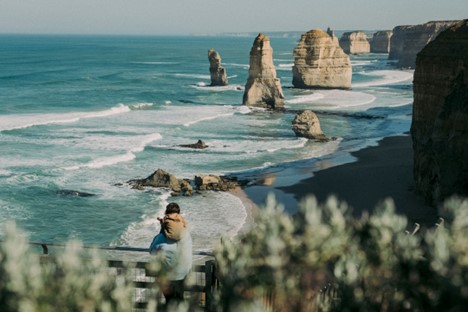The Westfjords of Iceland, with their dramatic landscapes and remote villages, offer a unique window into the soul of Icelandic culture. My journey to Isafjordur and Bolungarvík, two of the most charming and historically rich communities in this region, was an immersive experience that brought the past to life in ways I had not anticipated. Through visits to fishing museums, encounters with local historians, and even listening to traditional folk songs in a small church, I found myself deeply connected to the resilient spirit of the Icelandic people.
This is the latest article in my series about Iceland. If you want to discover some reasons to visit Iceland, this article is a great place to start:
Discover Iceland: 7 Compelling Reasons to Explore the Land of Fire and Ice
*Disclaimer: This post may contain affiliate links. If you make a purchase through one of these links, I will earn a small commission. This occurs at no added cost to you.*
A Journey Through Time: The History of Isafjordur and Bolungarvík
Isafjordur, the largest town in the Westfjords, has a history that stretches back to the 9th century when Norse explorers first settled it. Over the centuries, it grew into a thriving hub for fishing and trade, thanks to its natural harbor and strategic location. The town’s historic center is a living museum, with its narrow streets lined with colorful wooden houses dating back to the 18th century. As I strolled through these streets, I could sense the layers of history that have shaped this community—each building and alleyway telling a story of seafarers, merchants, and families who have weathered the storms of the North Atlantic.
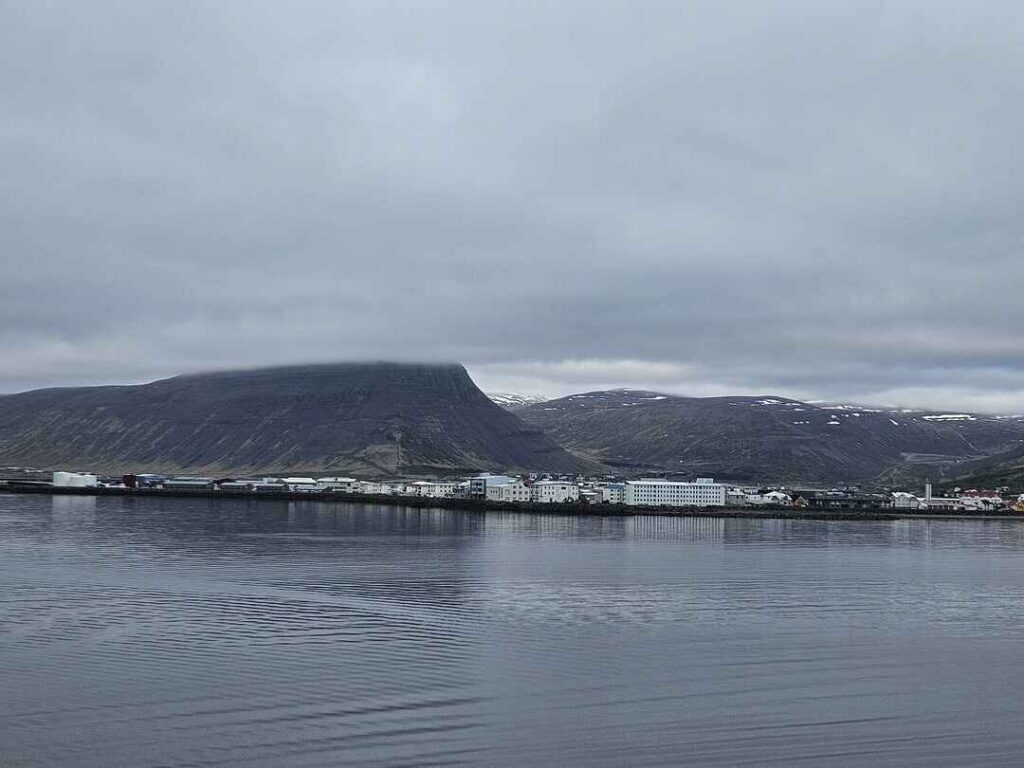
Just a short drive away, Bolungarvík, one of Iceland’s oldest fishing villages, offers a more intimate glimpse into the country’s maritime past. This small community has relied on the sea for centuries, and its history is deeply intertwined with the fishing industry. The sight of fishing boats in the harbor and the smell of salt in the air instantly transported me back to a time when the sea was both a source of sustenance and a formidable adversary for the people of Bolungarvík.
Exploring the Fishing Museums: A Deep Dive into Icelandic Culture and Maritime Heritage
No visit to these towns would be complete without a stop at their respective fishing museums, where the history of Icelandic culture is carefully preserved. In Isafjordur, the Westfjords Heritage Museum is housed in one of the town’s oldest buildings, a former 18th-century warehouse. The museum’s exhibits provide a fascinating look at the region’s maritime history, showcasing everything from traditional fishing equipment to photographs that capture the daily lives of fishermen in the early 20th century.
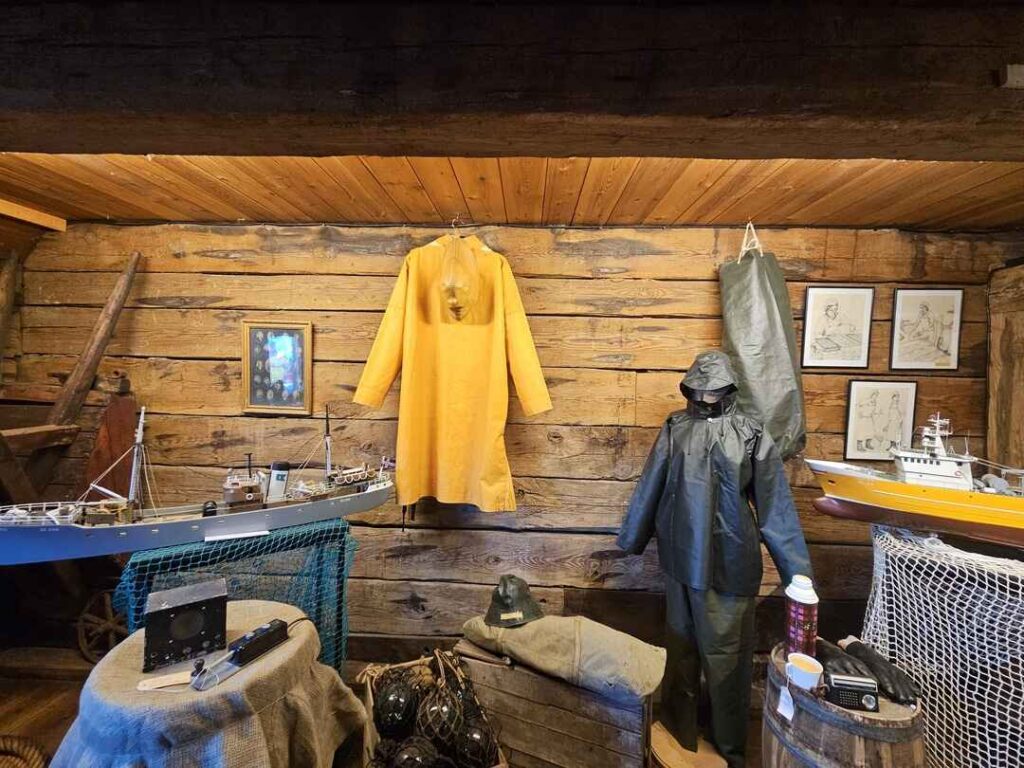
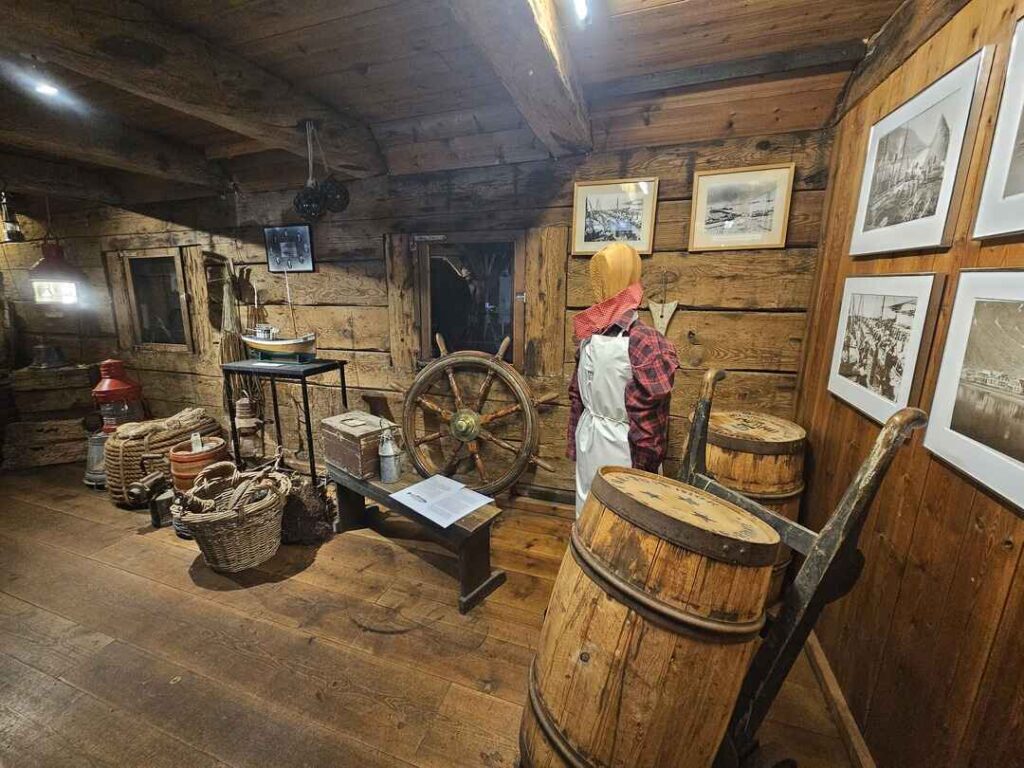
Walking through the museum, I was struck by the ingenuity and resourcefulness of the people who have lived in this remote part of the world. The exhibits tell the story of how the sea has both provided for and taken from the community.
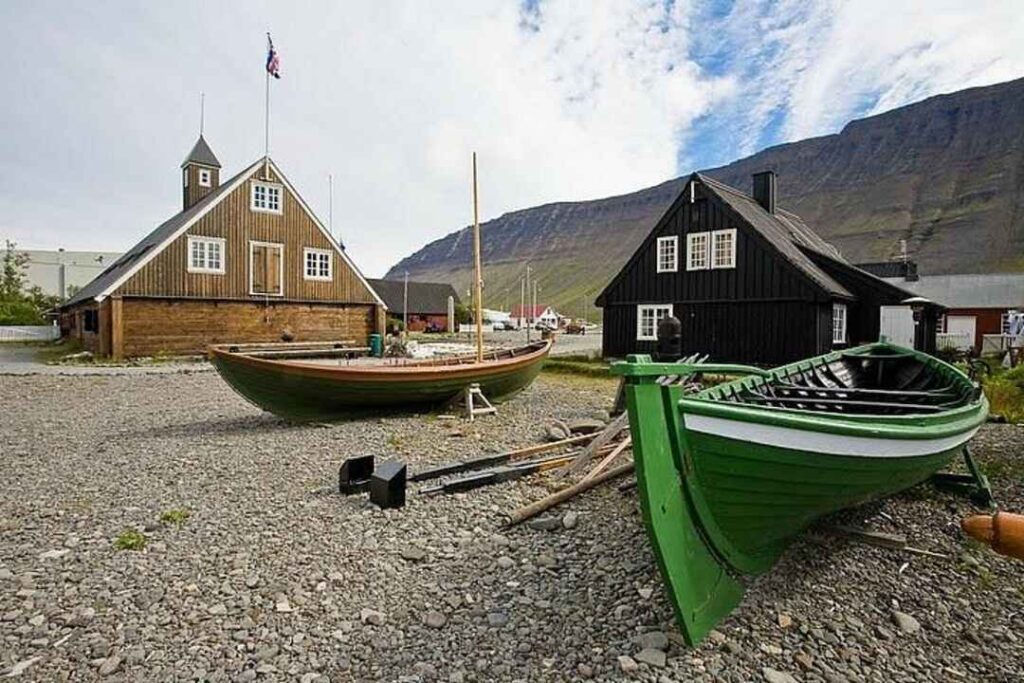
In Bolungarvík, the Ósvör Maritime Museum takes you even deeper into Iceland’s fishing history. This museum replicates a 19th-century fishing station with turf-roofed huts and a reconstructed fishing boat. As I explored the museum, a historian dressed in traditional fishing attire—a visual reminder of the village’s deep-rooted connection to the sea provided commentary.
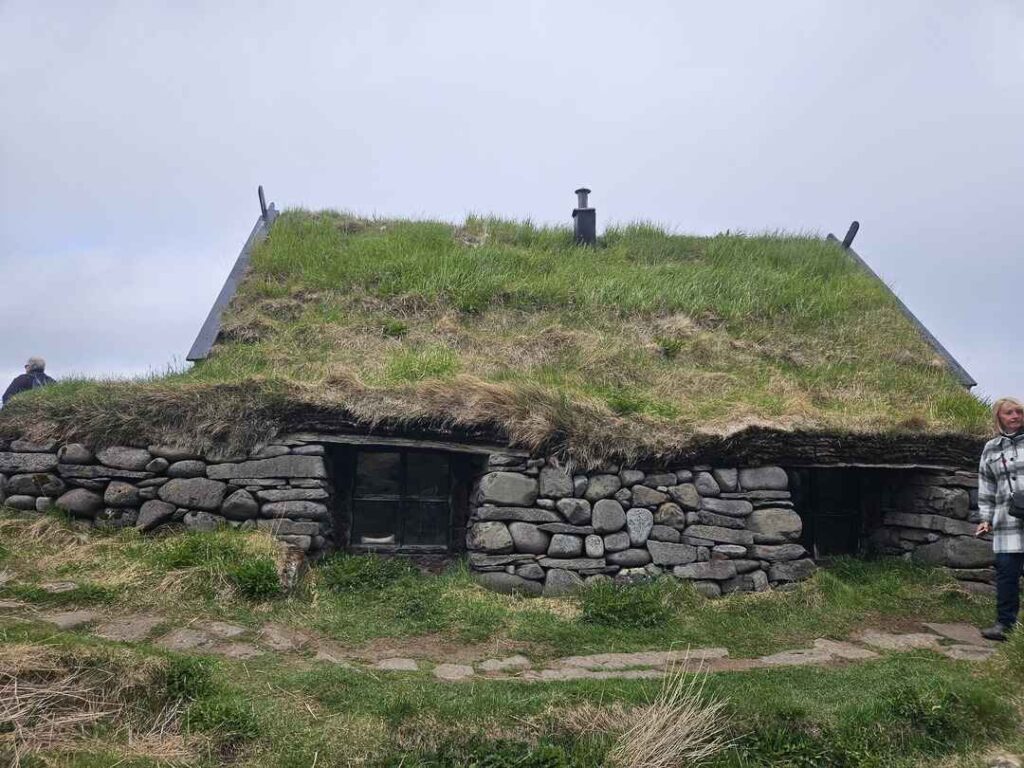
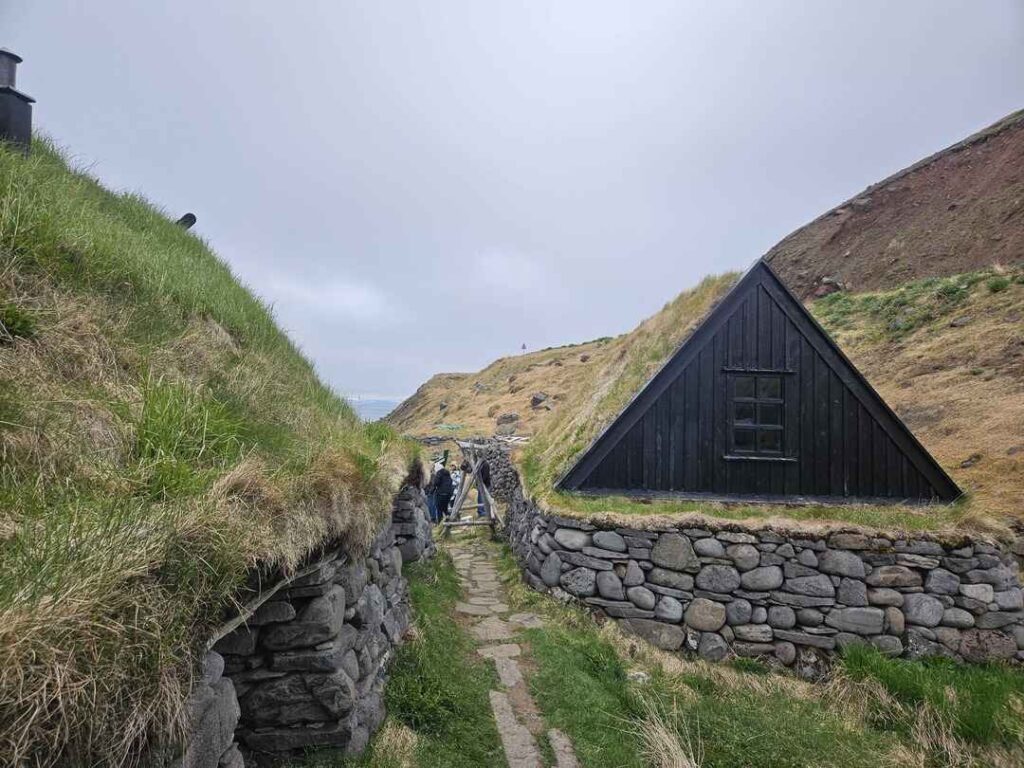
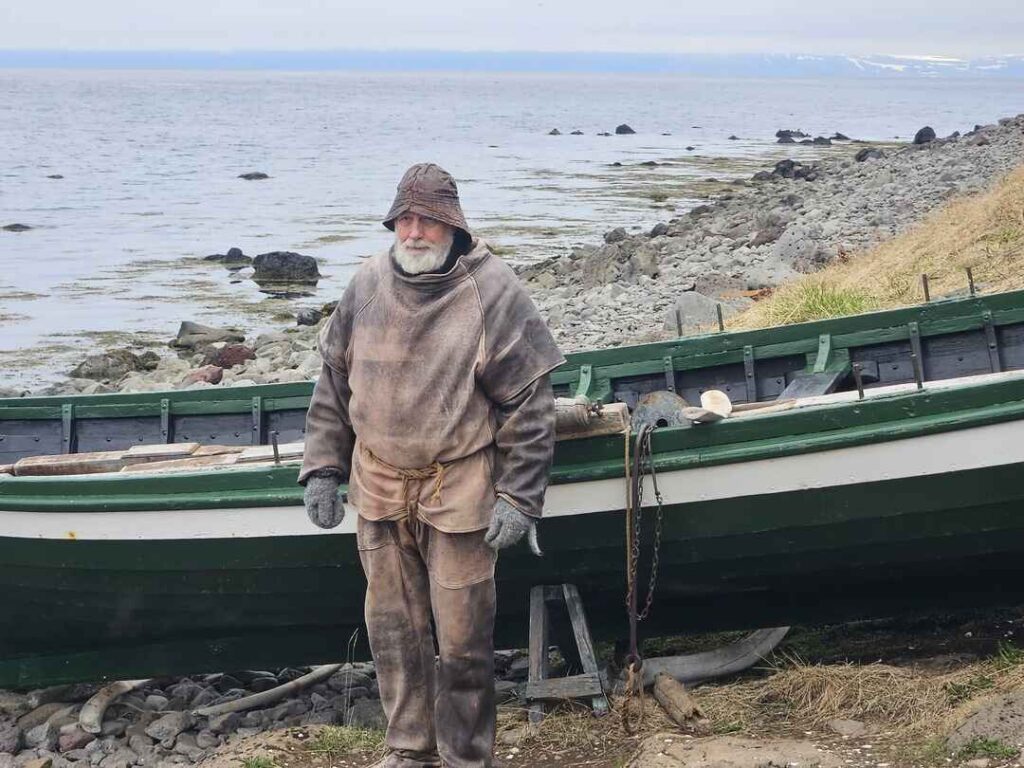
The historian, who spoke only Icelandic, shared stories of the fishing culture passed down through generations of the fishermen who previously lived and worked in Bolungarvík. Through a translator, I learned about the hardships and triumphs of the fishermen who once braved the icy waters of the North Atlantic. This encounter was a poignant reminder of how deeply rooted fishing is in Icelandic culture and how language plays a crucial role in preserving it. The historian’s dedication to preserving the language and traditions of his ancestors brought the history of Bolungarvík to life in a way that books or displays alone could never achieve.
The Berm: Isafjordur’s Shield Against Nature’s Fury
While the sea has been a vital lifeline for the people of Isafjordur, the mountains surrounding the town have long posed a serious threat. Avalanches and rockslides are a constant danger in this region, especially during winter. A massive berm was constructed to protect the town—an artificial barrier designed to absorb the impact of avalanches and prevent them from reaching the town below.
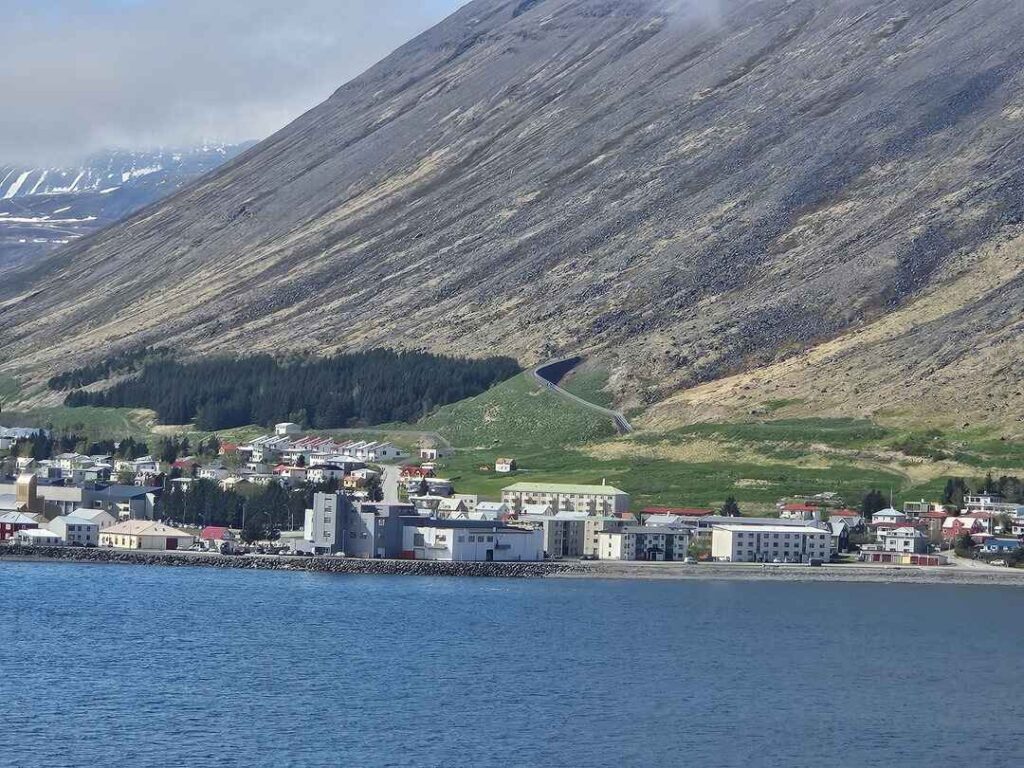
Standing beside the berm, I was struck by its sheer size and the engineering that went into its construction. The berm is a testament to the resilience of the people of Isafjordur, who have found a way to coexist with the surrounding forces of nature. It’s not just a physical barrier; it’s a symbol of the community’s determination to protect their way of life. Without the berm, Isafjordur would be at the mercy of the mountains, and the threat of disaster would constantly overshadow the lives of its residents.
The Tunnel: Bridging Communities and Easing Isolation
Traveling to Isafjordur and Bolungarvík today is relatively easy, thanks largely to the construction of a 4km tunnel through the mountain separating the two towns. Before the tunnel was built, the only way to travel between these communities was by a narrow, winding mountain road, often impassable in winter. The road was dangerous, prone to landslides, and could take hours, even in good weather.
Driving through the tunnel, which opened in 2010, I couldn’t help but reflect on how this simple infrastructure has transformed life in the Westfjords. The tunnel, which cuts through the mountain in just a few minutes, has made travel safer and brought the communities of Isafjordur and Bolungarvík closer together. It has facilitated the sharing of resources, enabled more frequent interactions between residents, and reduced the sense of isolation that once defined life in this remote region.
The tunnel is a powerful example of how modern engineering can enhance traditional ways of life, making it easier for communities to thrive in challenging environments. As I emerged from the tunnel into the bright daylight, I felt a deep appreciation for the ingenuity and determination of the people who built it—a testament to the forward-thinking spirit that continues to drive progress in the Westfjords.
The Living History of Bolungarvík: A Visit to the Church
One of the most memorable moments of my visit to Bolungarvík was stepping into the village’s small church to hear a young resident sing traditional Icelandic folk songs. The church, with its simple wooden interior and stained-glass windows, was a place of quiet reflection. As the young girl’s voice filled the space, I was transported to another time.

The songs, sung in Icelandic, told tales of the past—stories of love, loss, and the enduring relationship between the people of Bolungarvík and the sea. Although I didn’t understand the words, the emotion in the young singer’s voice was unmistakable. The songs connected the village’s history and culture, passed down through generations like a precious heirloom.
Listening to those folk songs in the church, I felt a profound sense of connection to the community. Like the historian at the Ósvör Maritime Museum, the young singer played a crucial role in preserving the cultural heritage of Bolungarvík. Through her voice, the stories of the past were brought to life, ensuring they would not be forgotten in a rapidly changing world.
Conclusion: A Deep Connection to Icelandic Culture
My journey through Isafjordur and Bolungarvík was an exploration of not just two small towns but of the enduring culture that has shaped the lives of the people there. From the fishing museums that preserve the region’s history to the berm that protects Isafjordur from avalanches to the tunnel that connects these communities, every aspect of my visit was a testament to the resilience and resourcefulness of the Icelandic people.
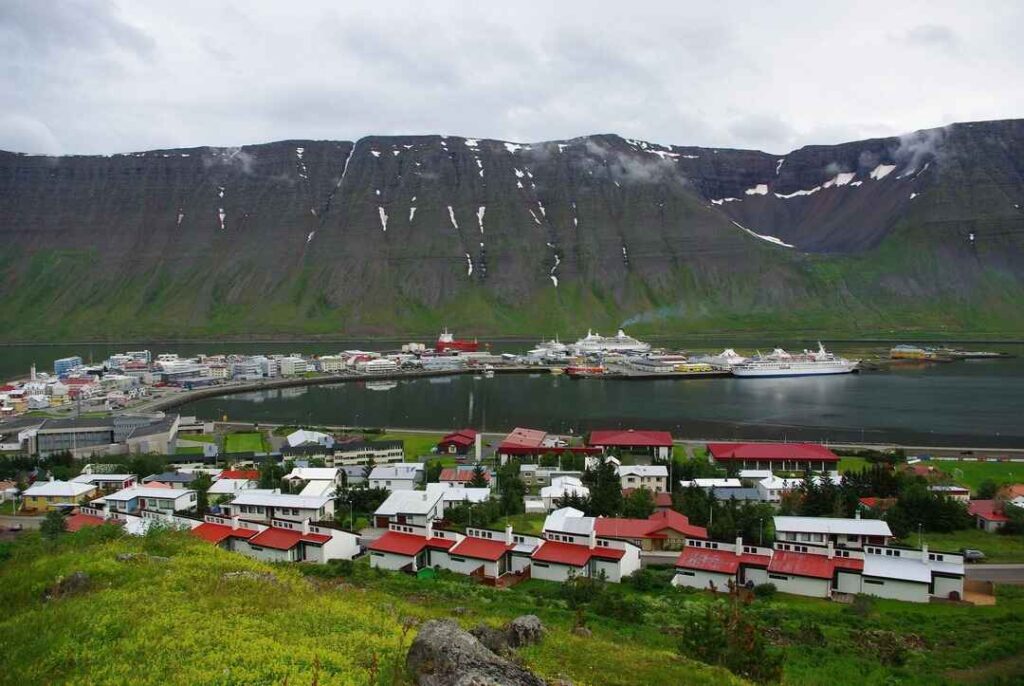
However, the personal encounters left the most profound impression on me—the historian in traditional attire, the young singer in the church—and these moments truly brought the culture of the Westfjords to life. They reminded me that Icelandic culture is not just something to be observed but to be experienced, felt, and understood on a deeper level.
As I left Bolungarvík and began the journey back through the tunnel, I carried a newfound appreciation for the strength and vitality of Icelandic culture. The people of Isafjordur and Bolungarvík have found ways to survive and thrive in one of the most challenging environments on earth. Their culture is a living testament to their strength, adaptability, and deep connection to the land and sea. This culture remains as vibrant and resilient as ever despite the challenges of the modern world.
You might also be interested in these articles on Iceland:
Sunhats and Chardonnay is a space where we share our travel experiences, tips, and insights. Join us on a journey to explore the world through the eyes of a traveler. Get inspired, plan your next adventure, and immerse yourself in the beauty of diverse cultures and destinations.
If you enjoyed this post, please subscribe to the newsletter and have all the updates sent directly to you.
If you’d like to support this blog & help fund the cost of researching & maintaining the site, donations are accepted here. We appreciate all the help & support received from our readers so far!

